Unit
Years: 1917-1938

Culture & Community

Historical Events, Movements, and Figures
Prior to this lesson, students should be familiar with the history of post-Civil War African American history. In particular to contextualize the time, students should be familiar with the effects of and backlash to the attempts at a racial democracy and economic adversity leading to the Great Migration as, in many ways, a response to these historical conditions.
Students should also be familiar with art, music and literature as primary sources that allow for analysis of cultural heritage across time and across contexts.
You may want to consider prior to teaching this lesson: Moving North Marcus Garvey and the UNIA
You may want to consider after teaching this lesson: The Harlem Renaissance – Music & Literature
With millions of African American people inhabiting Northern cities because of the Great Migration, artists of the Harlem Renaissance used their talents to capture a mood of hope and optimism around the future that depicted urban life while also turning their creative talents towards a critical assessment of racial injustice in the United States.
The Great Migration, which began in the early 20th century, saw African Americans moving from the rural South to urban centers in the North, Midwest, and West. This mass movement was driven by various factors, including Jim Crow segregation, economic opportunities in Northern cities, and the desire to escape racial violence and discrimination. The influx of African Americans into cities like New York, Chicago, and Detroit fueled the growth of vibrant urban communities and cultural hubs.
Simultaneously there continued to be widespread racial violence and oppression against African Americans, including lynching, race riots, and systemic discrimination. Events such as the Red Summer of 1919, during which race riots erupted in numerous cities across the United States, highlighted the pervasive racial tensions and violence that African Americans faced.
Many artists who were born, raised, or lived in Harlem between 1910-1940 credit it with influencing their work. Harlem, a district in New York City, became a “cultural capital” for African American artists during this time and the period where their work most flourished was known as the Harlem Renaissance. Art, music, and literature drew upon multiple influences along with the community’s shared heritage. It was the first such overt movement inspired by race-conscious African Americans.
Community Support & Funding:
In addition to its many artists, Harlem was also home to a thriving community of black-owned businesses during the Harlem Renaissance, including publishing houses, theaters, nightclubs, and art galleries. These businesses often provided financial support and promotional opportunities for African American artists, writers, and performers, helping to showcase their work and reach wider audiences.
The Harlem Renaissance was also amplified through the hard work and ingenuity of its artists as well as through the financial support of local communities, Black owned business foundations such as the Harmon Foundation and federal projects under the Works Progress Administration (WPA) program.
The Harmon Foundation provided monetary prizes to talented African American artists and created traveling exhibitions of their work as a way to share this art throughout the United States. Its founder, William H. Harmon, a White real estate magnate and philanthropist, had an interest in “promoting justice and social commitment.” Though the Great Depression ended the annual awards competition in 1933, the Foundation continued to exist until 1963.
Finally, churches, community centers, and social clubs in Harlem also played a vital role in supporting African American arts and culture during the Harlem Renaissance. These institutions hosted literary readings, musical performances, art exhibitions, and intellectual gatherings, providing platforms for creative expression and cultural exchange within the community.
Works Progress Administration:
The Works Progress Administration (WPA) was a key program of President Franklin D. Roosevelt’s New Deal during the Great Depression. It was established in 1935 to provide employment to millions of Americans who were unemployed due to the economic downturn. The WPA encompassed various projects, including the construction of public buildings, roads, bridges, and parks, as well as initiatives in the arts, such as the Federal Art Project, the Federal Writers’ Project, and the Federal Music Project. The Federal Art Project, for instance, employed African American artists to create murals, paintings, and sculptures for public buildings and community spaces. The Federal Writers’ Project employed African American writers to document the history and culture of African American communities and to produce guidebooks, oral histories, and literary works. The Federal Music Project supported musicians and composers, offering them opportunities to perform and teach.
The WPA had a significant impact on African Americans, who faced disproportionately high levels of unemployment and economic hardship during the Great Depression. The program provided employment opportunities for many African American workers, helping to alleviate poverty and stimulate economic activity in African American communities. Further, many Harlem Renaissance artists gained national recognition through the WPA Federal Art Project. This project gave artists the opportunity to explore social issues as well as time to study and develop their skills.
Despite its positive impact, the WPA also faced criticism for perpetuating racial segregation and inequality. Many WPA projects maintained separate facilities and work crews for African American workers, and African American artists and writers often faced discrimination and marginalization within the program. The Federal Art Projects came to an end when the House Sub-Committee on Appropriations deemed it too expensive a program, responsible for artwork deemed “subversive.” Then in 1943, at the start of World War II, the United States shifted its focus to wartime production and the WPA program as a whole was ended.
There are countless famous figures that were influential during the Harlem Renaissance. In this unit, the visual artistry of Jacob Lawrence, Romare Bearden, and Faith Ringgold will offer an introduction to the more expansive body of art that emerged during the Harlem Renaissance. Their work, like many other African American artists of that time, serve as creative mirrors for the varied experiences of members of the African American community- telling stories of African American pride and resilience while also commenting on and critiquing American life.
Romare Bearden
Romare Bearden was born on September 2, 1911, in Charlotte, North Carolina but grew up in Harlem, New York. Bearden was known for his collages, paintings, and prints that depicted African American life, culture, and history. His artistic medium included painting, printmaking, and mixed media but he is most recognized for his collage work. Bearden’s series often consisted of collages inspired by African American rituals and cultural traditions and reflected his interests in African American culture and communities as well as jazz music.
Jacob Lawrence
Jacob Larence was born on September 7, 1917, in New Jersey, but grew up in Harlem and described himself as being a “product of the Harlem community.”. Lawrence is best known for his paintings, drawings, and prints that depicted African American life and history, as well as broader themes of social justice and human struggle. His artistic medium primarily included painting and drawing in vivid colors.
Lawrence narrative paintings tell the stories of African American history and experiences. Lawrence famously created the “The Migration Series” between 1940 and 1941 which depicts the migration from the South to the North. Lawrence’s other works explore themes such as slavery, abolitionism, the Civil War, the Harlem Renaissance, and the struggles for civil rights and social equality, incorporating key figures such as Harriety Tubman.
Faith Ringold
Faith Ringold was born on October 8, 1930, in Harlem, New York City. She studied at the City College of New York before becoming an art teacher. Ringgold’s artistic medium encompasses a wide range of techniques, including painting, printmaking, and storytelling. She is best known for her narrative quilts though, which combine painting, fabric, and storytelling.
Ringgold’s work was often inspired by events in her own life as a woman, but she also chronicled the experiences of her family. Ringold’s work often used and reflected traditional African patterns. One of Ringgold’s most famous works is “Tar Beach,” created in 1988, which is both a children’s book and a story quilt.
The Great Depression
The Harlem Renaissance is often considered to have ended in the mid-1930s, as the Great Depression took hold and economic hardship affected African American communities. The movement experienced a decline in funding for artistic endeavors, and many artists and intellectuals shifted their focus to social and political activism.
The legacy of the Harlem Renaissance continues to reverberate in American culture and society. It laid the groundwork for future generations of African American artists and intellectuals, inspired movements for civil rights and social justice, and contributed to a broader recognition of African American contributions to the canon of American Arts and culture.
A New African American Identity: The Harlem Renaissance (Smithsonian Institution)
The Harlem Renaissance (Poetry Foundation)
A Brief Guide to the Harlem Renaissance (Academy of American Poets)
The Harlem Renaissance (Black History in Two Minutes or so)
The Harlem Renaissance’s Cultural Explosion, In Photographs (PBS NewsHour)
Harlem in the 1920s (PBS Learning Media)
The Artists of the Harlem Renaissance (The Phillips Collection)
Voices of the Harlem Renaissance (New York Public Library)
Harlem Renaissance: The Peopling of New York City (City University of New York)
The Harlem Renaissance: A Chronology (Yale University)
The Harlem Renaissance: Restructuring, Rebirth and Reckoning (Learning for Justice)
Jacob and Gwen Knight Lawrence Information Center (jacobandgwenlawrence.org)
Faith Ringold (faithringgold.com)
Romare Bearden Foundation (beardenfoundation.org)
Teaching the Harlem Renaissance and using visual arts is an opportunity to emphasize creativity and the deep and lasting cultural contributions made by African Americans to the United States. It is important that in addition to introducing students to this time, and the well known artists associated with it, that students understand that these pieces of art serve as creative mirrors for the varied experiences of members of the African American community.
Their work tells stories of African American pride and resilience while also commenting on and critiquing American life. In turn, this unit invites concepts such as Black joy, agency, voice, and empowerment to be central to the study of African American history. This approach complements and builds upon explorations of inequality, injustice, and oppression without losing sight of the humanity of African American people and their capacity to challenge, critique, and create through multiple media.
It is important however for students throughout the unit to not only explore and celebrate the collective works of arts shared but also to reflect on it as a response and record of the inequality and injustices of the time.
This topic offers a rich opportunity for cross-curricular collaboration, and we encourage teachers to consult with English, music, and art departments as they teach the Harlem Renaissance.
Finally, the terms “African American” and “Black” are both used throughout this unit to describe people of African descent in the United States. However it is important to note that Black and African American are not always interchangeable. African American generally refers to Americans of African descent who have a historical connection to the African diaspora. The term emphasizes both the racial and cultural heritage of individuals or communities within the context of American society. African American should not be used as an umbrella term for people of African ancestry worldwide because it obscures other ethnicities or national origins, such as Nigerian, Kenyan, or Jamaican. Black is used broadly to refer to people of African descent, regardless of their specific national or cultural backgrounds. It is often used as an inclusive and more general descriptor that emphasizes racial identity rather than cultural or historical connections. This topic offers a rich opportunity for cross-curricular collaboration, and we encourage teachers to consult with English, music, and art departments as they teach the Harlem Renaissance.
Art, music, dance and literature are different ways that people express themselves as individuals. These creative acts can also raise awareness about social and cultural issues in a given time and place. There is a long history of artistic contributions to American life from African and African American/Black people. These contributions to the American Arts canon are appreciated for the quality, beauty and creative expression they each hold. The work allows us through the study of its context and the work of the artists to further understand questions of race, identity, and social change through a range of voices.
Harlem, a neighborhood in New York City, became the “cultural capital” for African American/Black artists from the 1910s through the 1930s, in a period known as the Harlem Renaissance. Art, music, dance and literature all flourished, drawing upon and responding to multiple events and influences, including the community’s shared heritage.
The renaissance was amplified through the hard work and ingenuity of its artists as well as through the financial support of local communities, Black owned business foundations such as the Harmon Foundation and federal projects under the Works Progress Administration (WPA) program.
The Harlem Renaissance, as one of the major artistic movements in the 20th century, serves as a window to explore the creativity, identity and experiences of African AMerican people living at that time.
Select the activities and sources you would like to include in the student view and click “Launch Student View.”
It is highly recommended that you review the Teaching Tips and sources before selecting the activities to best meet the needs and readiness of your students. Activities may utilize resources or primary sources that contain historical expressions of racism, outdated language or racial slurs.
Access prior knowledge of students by introducing, reviewing or asking them to recall factors that led to the Great Migration of African Americans to the Northern states. Responses may include:
Provide students with the Student Context handout and review the connection between factors leading to the Great Migration and Clarify any misconceptions and ensure understanding.
To pique students interest to close the lesson you could either

Vocabulary & Key Terms:
Student Context:
Art, music, dance and literature are different ways that people express themselves as individuals. These creative acts can also raise awareness about social and cultural issues in a given time and place. There is a long history of artistic contributions to American life from African and African American/Black people. These contributions to the American Arts canon are appreciated for the quality, beauty and creative expression they each hold. The work allows us through the study of its context and the work of the artists to further understand questions of race, identity, and social change through a range of voices.
Harlem, a neighborhood in New York City, became the “cultural capital” for African American/Black artists from the 1910s through the 1930s, in a period known as the Harlem Renaissance. Art, music, dance and literature all flourished, drawing upon and responding to multiple events and influences, including the community’s shared heritage. The renaissance was amplified through the hard work and ingenuity of its artists as well as through the financial support of local communities, Black owned business foundations such as the Harmon Foundation and federal projects under the Works Progress Administration (WPA) program.
The Harlem Renaissance, as one of the major artistic movements in the 20th century, serves as a window to explore the creativity, identity and experiences of African American people living at that time.
Have students work in small groups and look at Jacob Lawrence Migration Series Panel 1-WWI Northern Migration. Have students zoom in on the image, examining the work’s fine details while discussing the following questions:
Have students work in pairs to write a paragraph, playing the role of art historian. Have students describe the image, explain how they believe it may offer insight into African American historical experiences, and then practice writing summaries by including their own understanding of the relevance of the Great Migration and the urban life that awaited the passengers.
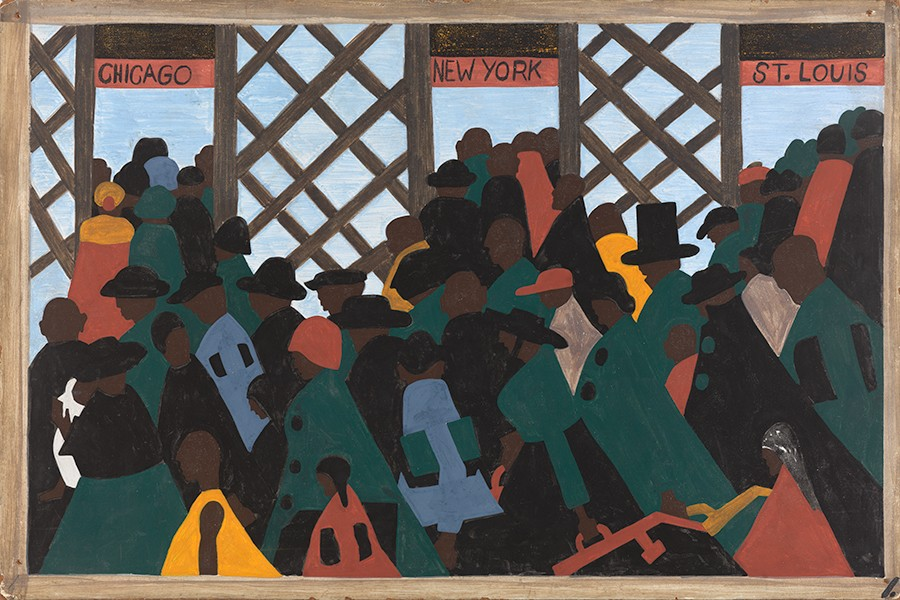
Introduce and discuss the following quotes as a whole class, interrogating the meaning of the statements.
After these quotes have been discussed, have students independently reflect on whether artists have a responsibility to focus on issues in their work.
Next, have the whole class look at Faith Ringgold’s “Flag Story Quilt” (If planning to complete Activity 4 do not yet reveal Ringold as the artist). For younger students, you may want to incorporate the text of Tar Beach by Faith Ringold and read it aloud to students and select an image from that text to explore.
With a partner, have students create a list describing everything that they notice in this piece of art. Reconvene as a class and discuss the following questions:
After the discussion, have students create their own flags OR quilt page, bringing attention to an aspect of contemporary American life that they believe needs to be altered or “flown from” in some way.
As a whole class, create a list of ways that students can use the arts and other outlets to advocate for issues that are impacting their own lives and the lives of those in the communities to which they belong.
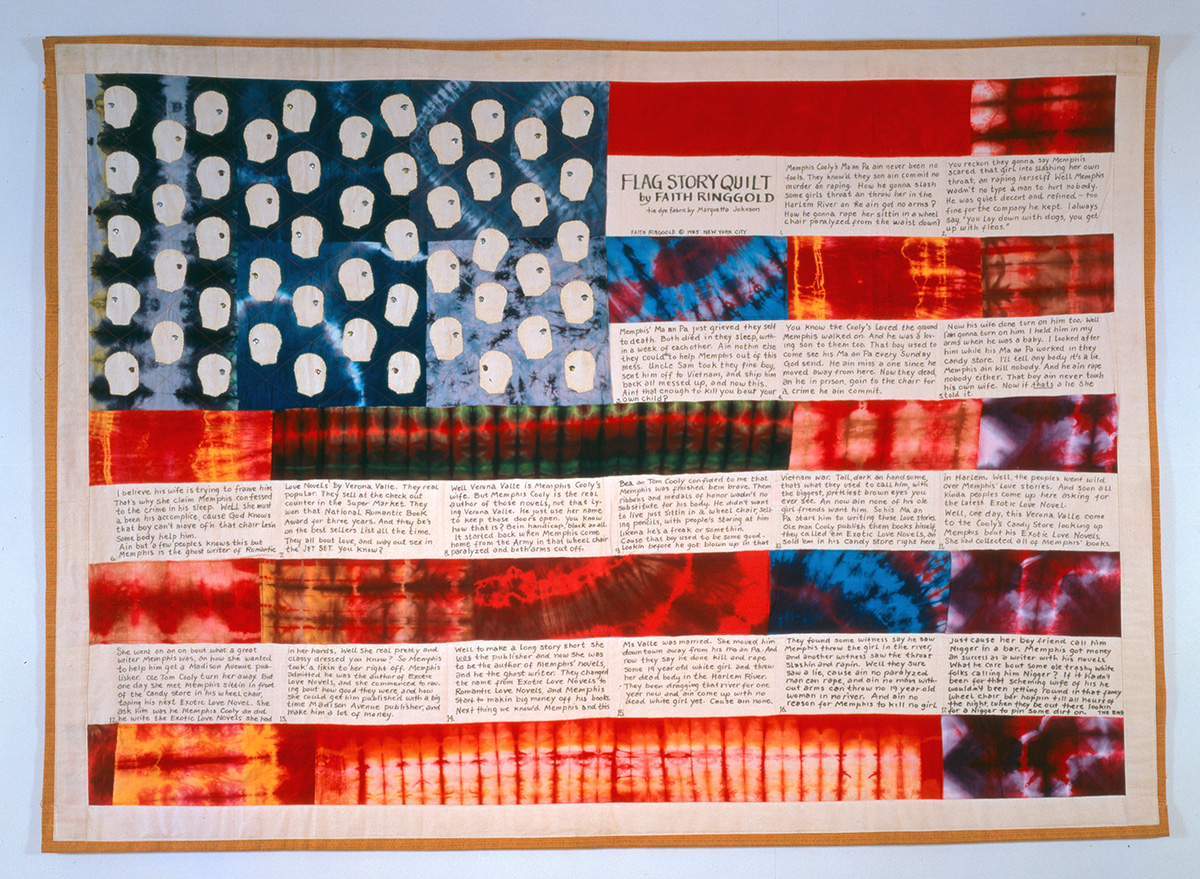
Assign numbers to ten pieces of art from Jacob Lawrence, Romare Bearden, and Faith Ringold. Exhibit the art around the classroom without their titles or artists’ names. Have students walk around the room, as if they were in a museum. Have students write down a one word response for each piece of art. For *Gr.5 +, the number of pieces can be lowered.
After students have looked at each image, have them share the words that each piece evoked. Discuss their word choice.
Considering all of the pieces, have students write a paragraph that describes their impressions of the exhibit as a whole, focusing on their observations regarding the ways aspects of African American/Black identities were expressed and displayed in the pieces of art.
Distribute biographies for each Harlem Renaissance artist and identify for students which artists completed which pieces viewed during the gallery walk. Have students then write a second paragraph that builds on their initial impressions and observations paragraph but, instead, focuses on the role of Harlem in the creative lives of Lawrence, Bearden, and Ringgold.
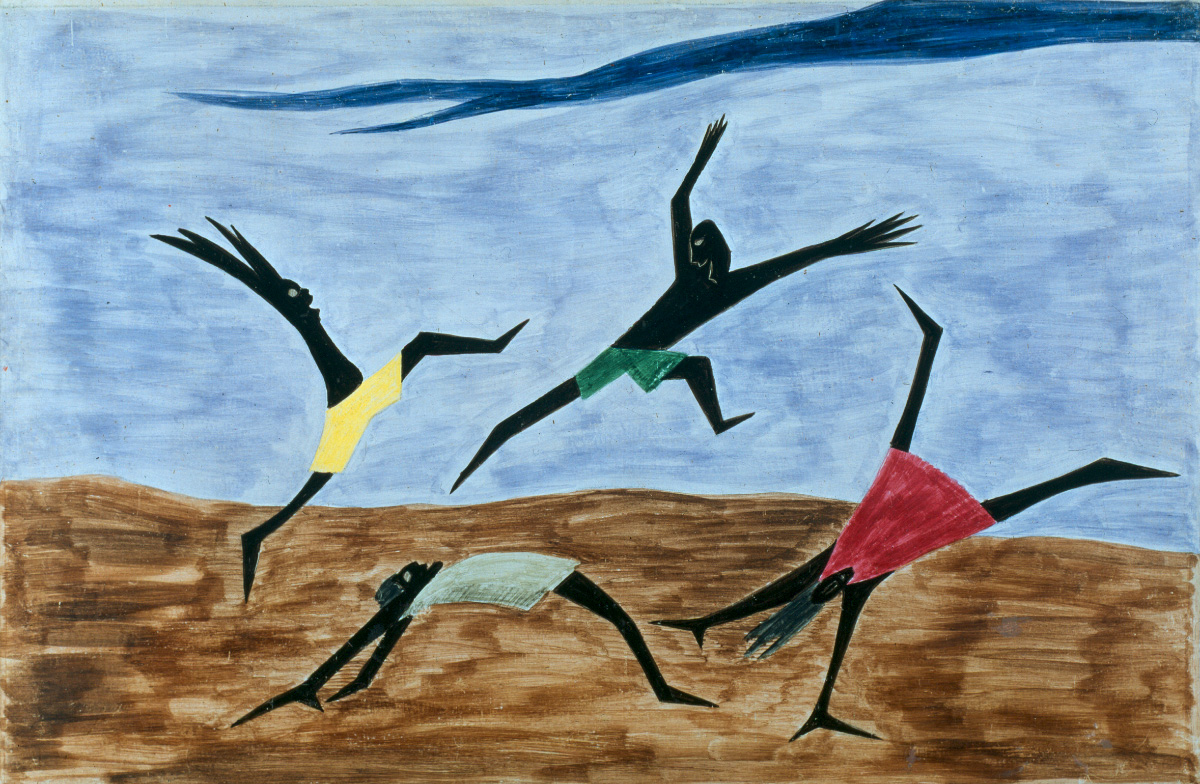
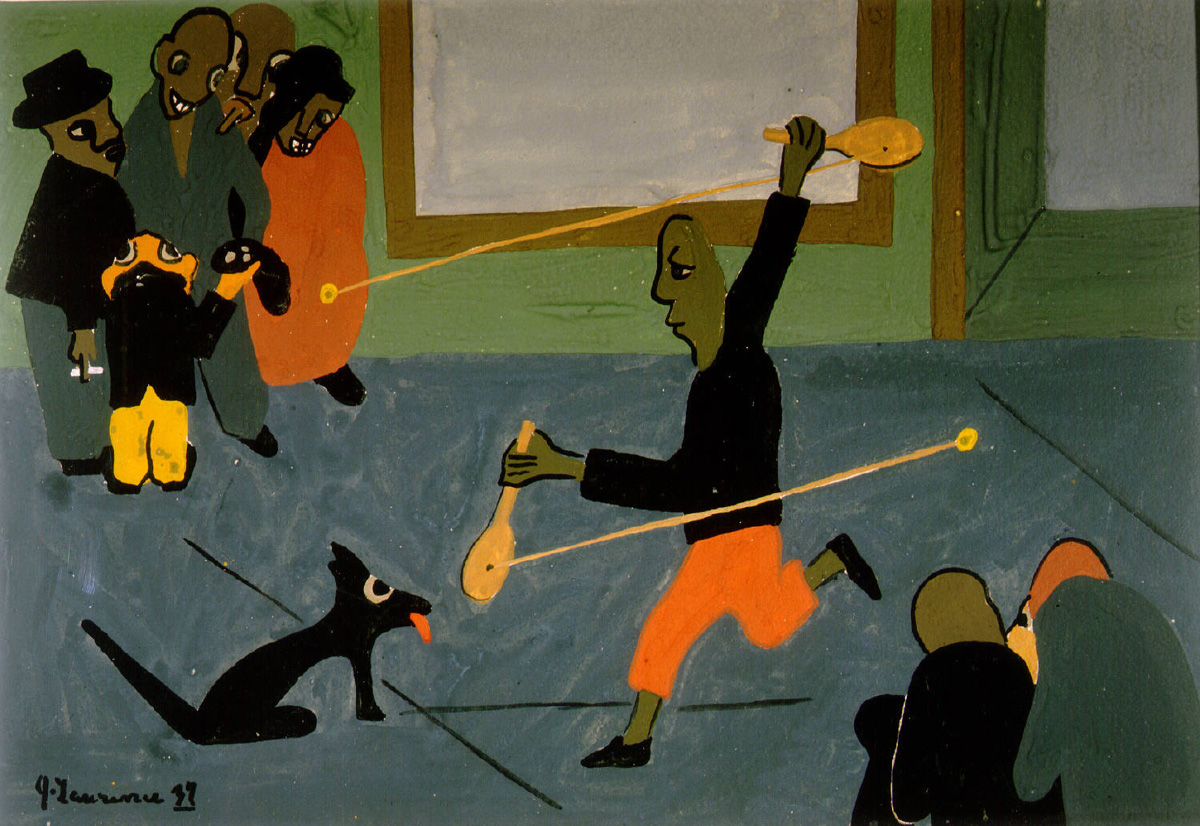
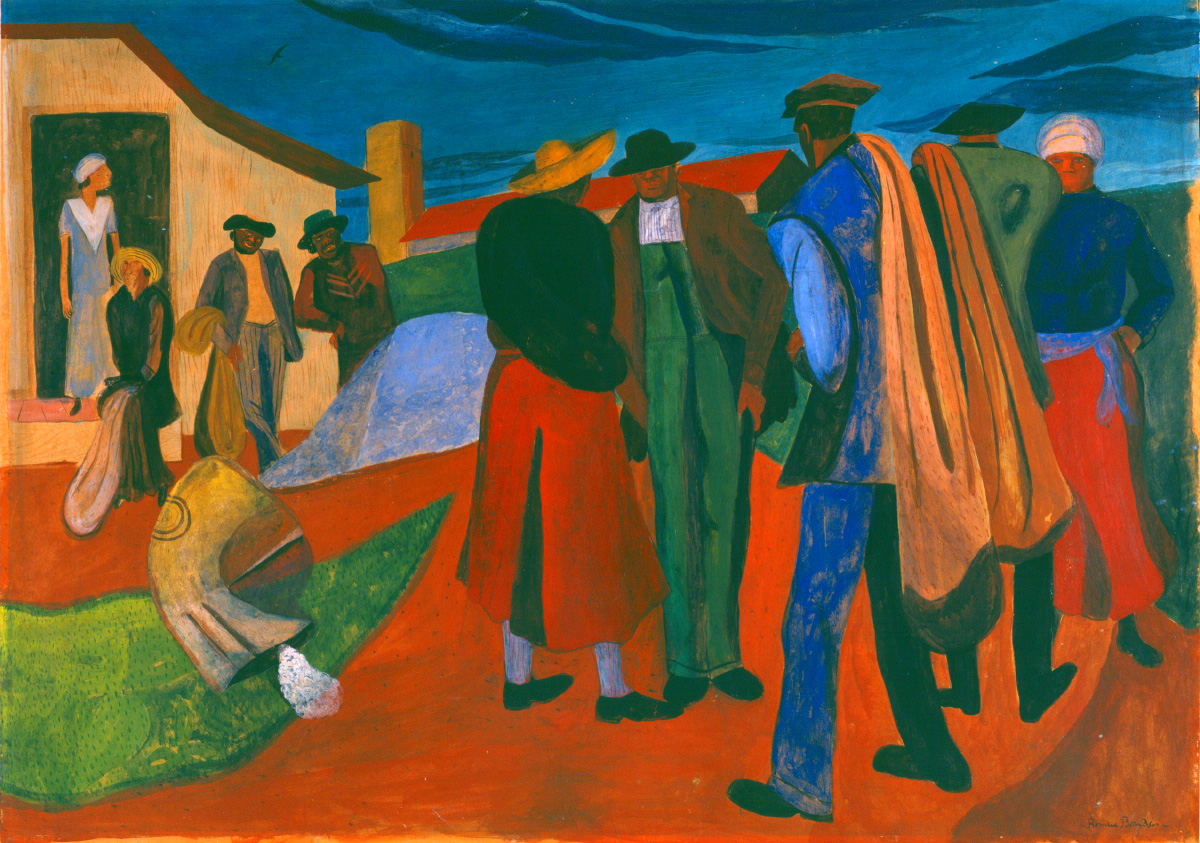
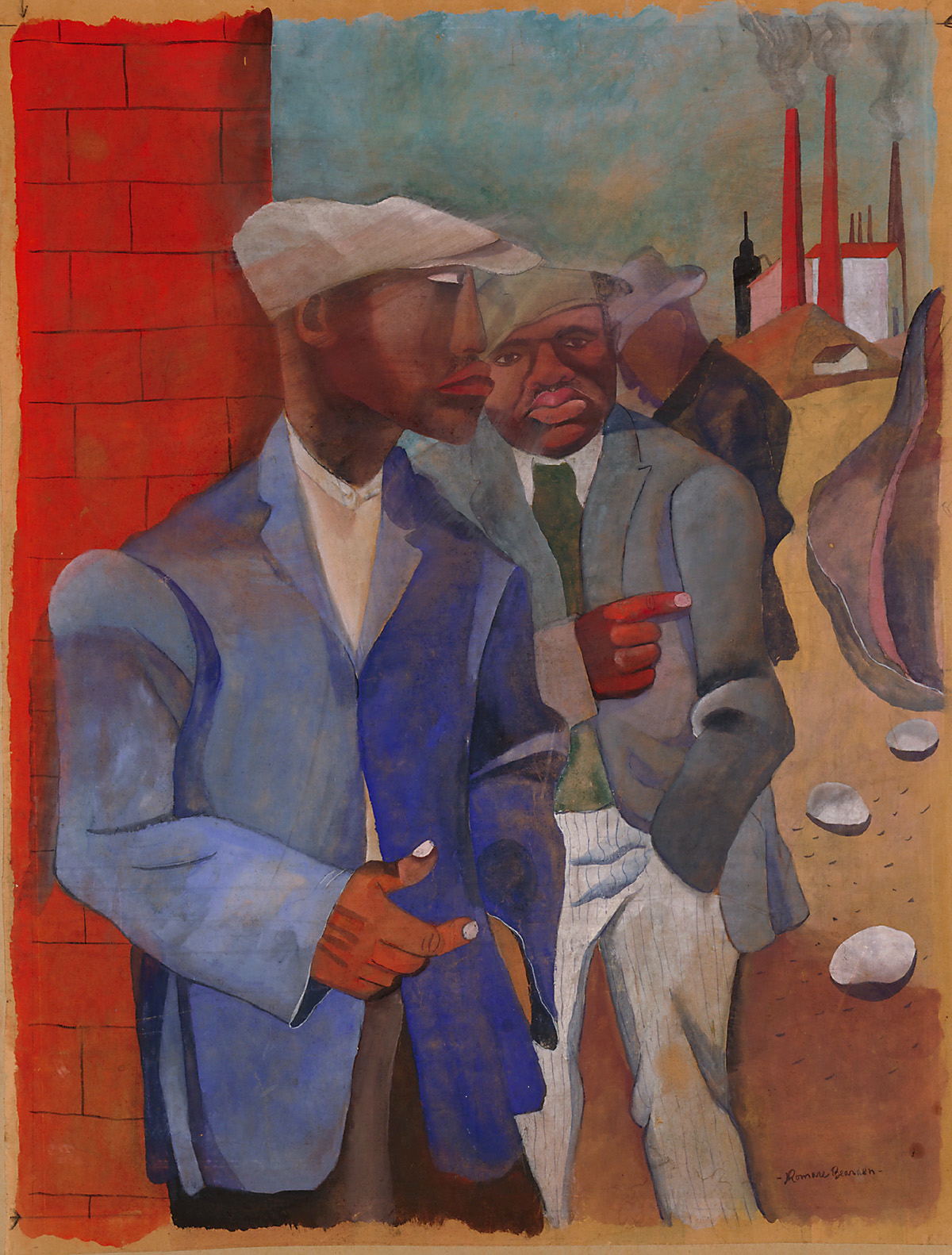
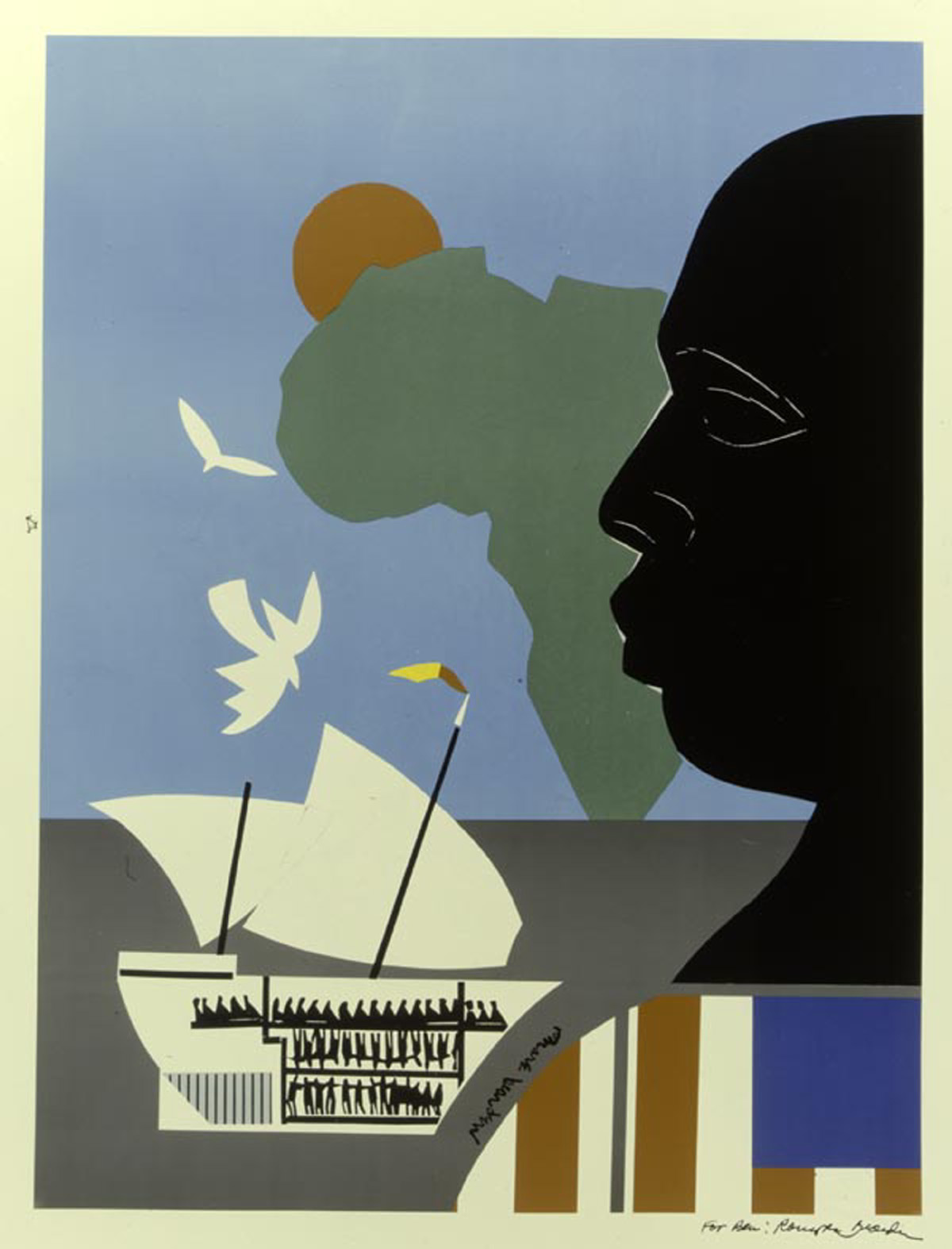
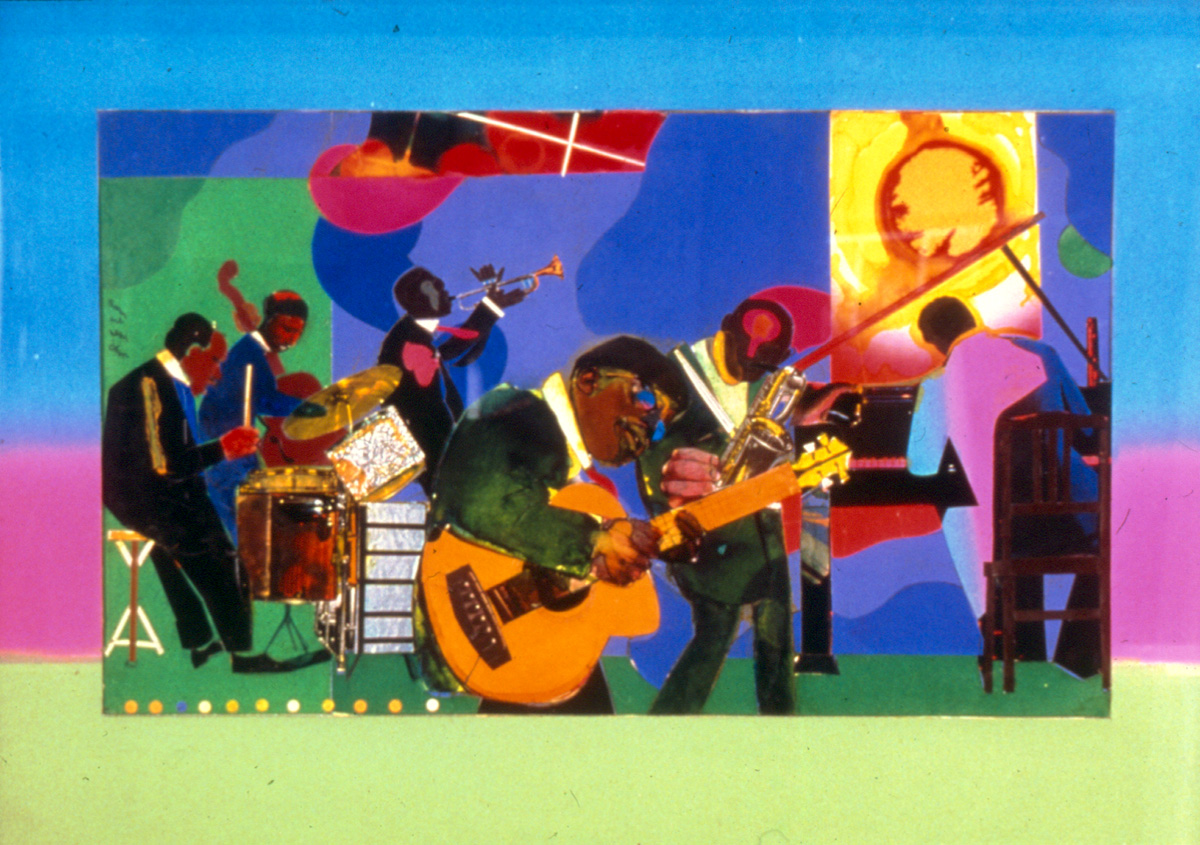
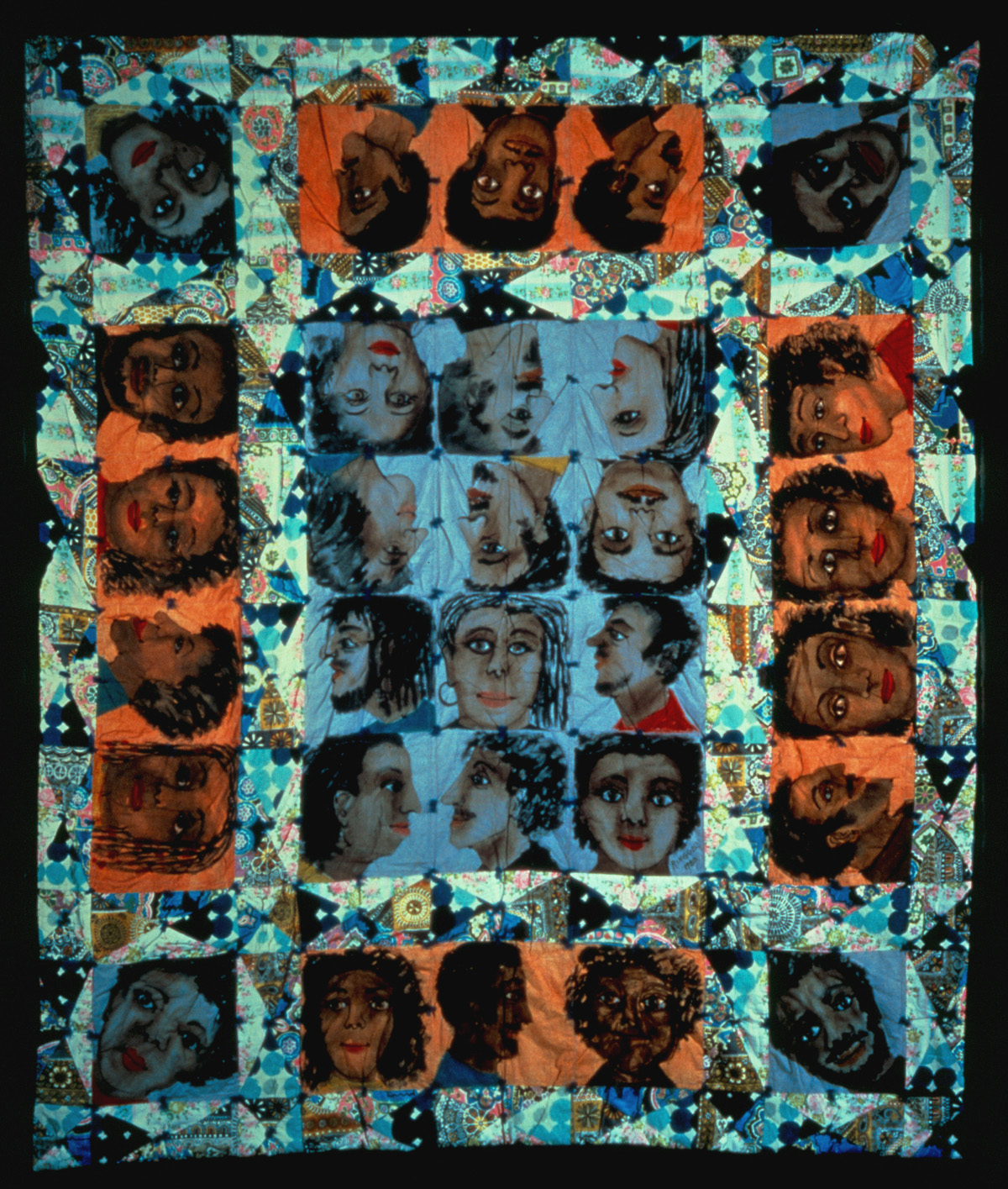
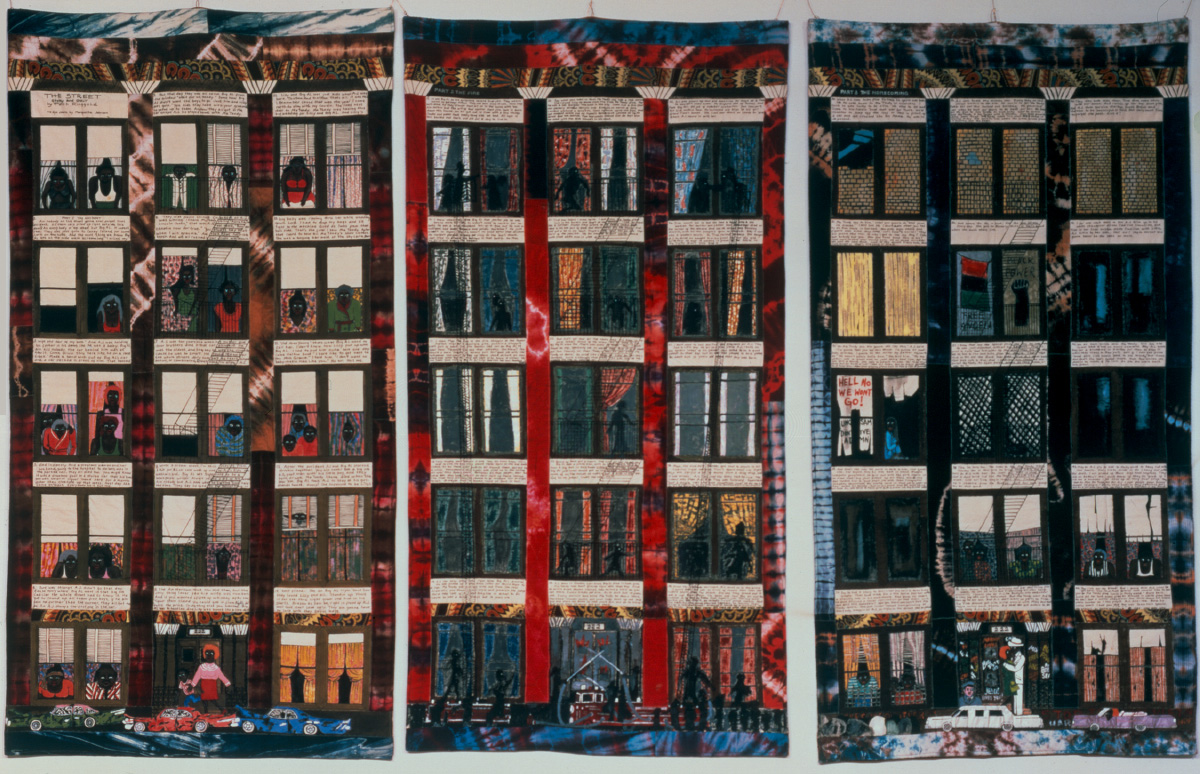

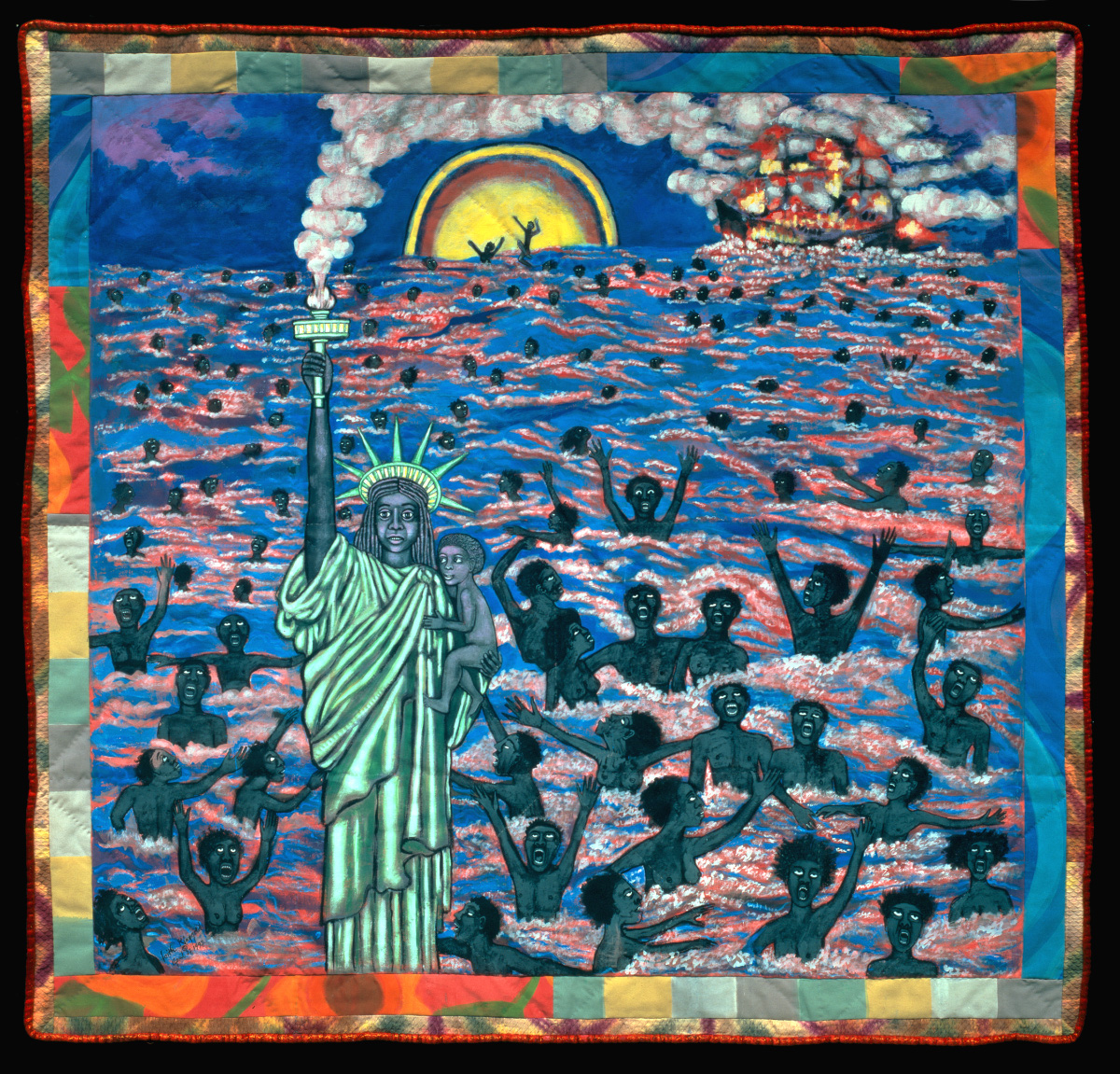
Explain to students that they will look at one panel from a series of pieces created by Jacob Lawrence and have students look at Panel #4 from his “Harriet Tubman Series.”
Ask students the following questions as they look at the panel.

“The Bo-Lo Game” is an example of Lawrence’s work in which he simplifies figures. Have students write a poem to accompany this image and sketch a geometric picture to accompany this poem. Ask students to use the following terms to inspire and orient their poems: joy, community, urban life.

As students to examine “The Cotton Pickers” and “Factory Workers” by Romare Bearden and answer the following questions:


Look at Romare Bearden’s “Jammin’ At the Savoy” and have students describe the way this piece of art captures music. Remind students that the Harlem Renaissance included music and poetry, along with the visual arts. Have students discuss why visual artists would capture the mood and feel of music and what they think it signifies about the era.
Then, bring into class music by Duke Ellington, Bessie Smith, Eubie Blake, or Louis Armstrong, all of whom are associated with the Harlem Renaissance.
Have students listen to one piece of music and create a piece of visual art in response, using Bearden’s style as inspiration. Once students have completed their art, have students describe the way their own art was influenced by the music that they heard. Then, have students write a poem that comments on–but does not necessarily speak on behalf of–the role of art and music in African American life during and beyond the Harlem Renaissance.

Introduce to students the Works Progress Administration (WPA) as a key program of President Franklin D. Roosevelt’s New Deal during the Great Depression using the brief overview that follows or an option of your choosing.
The Works Progress Administration (WPA) was established in 1935 by President Franklin D. Roosevelt to support Americans who were unemployed due to the economic downturn. This program, as part of the New Deal, was in response to the Great Depression in the United States.
The WPA encompassed various projects, including the construction of public buildings, roads, bridges, and parks, as well as initiatives in the arts, such as the Federal Art Project, the Federal Writers’ Project, and the Federal Music Project. The Federal Art Project, for instance, employed African American artists to create murals, paintings, and sculptures for public buildings and community spaces. The Federal Writers’ Project employed African American writers to document the history and culture of African American communities and to produce guidebooks, oral histories, and literary works.
Opportunities such as these, provided employment opportunities for many African Americans, helping to stimulate economic activity in African American communities and providing greater recognition of African American artistic and cultural contributions. Though this support and recognition helped to challenge racial stereotypes and discrimination, the WPA also faced criticism for perpetuating racial segregation and inequality. Many WPA projects maintained separate facilities and work crews for African American workers, and African American artists and writers often faced discrimination and marginalization within the program.
In 1943, at the start of World War II, the United States shifted its focus to wartime production and the WPA program was ended.
Following this overview, break students into three small groups and provide them time to do research to respond to one of the questions below. Students should prepare to be able to share their findings back with the whole class.
Return to the whole group and review responses from small group research, Then as a whole group discuss the following questions:
If not previously done, students should read and visually analyze Tar Beach by Faith Ringold.
Students should then identify an area they would like to address that they are in advocate for (Black Lives Matter, Climate Change, LGBTQ+ rights, Educational Reform, etc. ).
Students should design two or more story quilts to first identify the concern that needs to be addressed and then to represent the dream solution or dream ideals they believe will positively support those impacted.
Have students look at Romare Bearden’s “Roots Odyssey” and answer the following questions:
Next, have students examine Faith Ringgold’s “We Came to America” and answer the following questions:
Then, have students compare “Roots Odyssey” and “We Came to America.” and determine the aspects that spoke to them most to use to complete their own collage project.
Students can identify an element of their lived experience (racial, religious, linguistic, regional, etc.) or cultural heritage/traditions to create a collage using “Roots Odyssey” or “We Came to America” as a model. Encourage students to use various materials to emulate the layered effect of Bearden’s or Ringgold’s respective styles. Have each student-artist write a short narrative responding to the same questions they explored for Bearden or Ringold.
Display the finished art and narratives around the classroom.
Please login or sign up to access the student view functions.